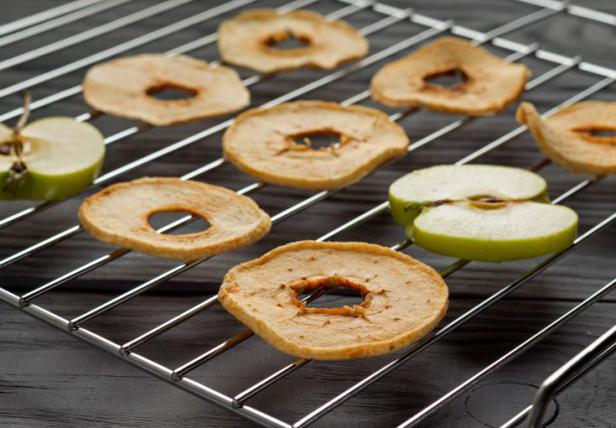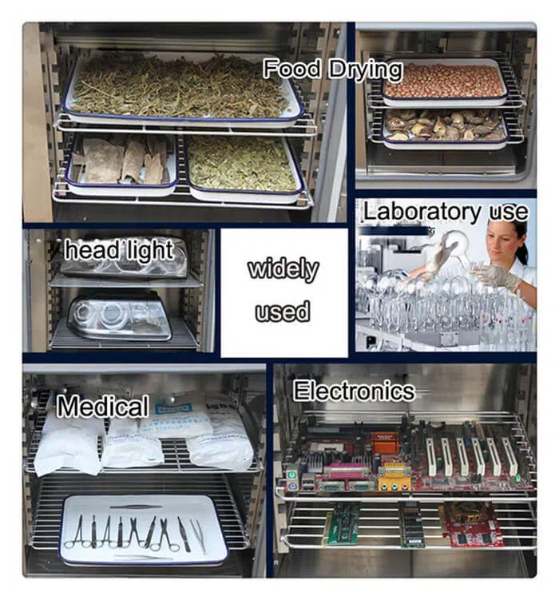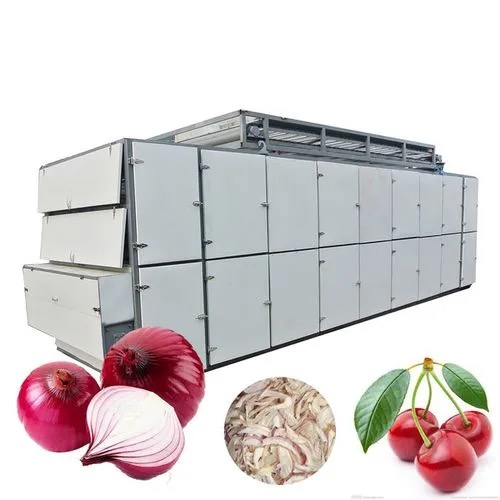
Content Menu
● Introduction to Air Drying Food
● Understanding Air Drying Food Techniques
>> The Science Behind Air Drying
>> Traditional Air Drying Methods
● Best Food Dehydrator Machines
>> Features to Look for in a Food Dehydrator
● DIY Food Drying Equipment
>> Solar Dehydrator
>> Oven Drying Racks
>> Hanging Drying Racks
● Commercial Air Drying Machines
>> Types of Commercial Dehydrators
>> Advantages of Commercial Systems
● Homemade Food Dehydrator Plans
● Air Dry vs Freeze Dry Food
>> Air Drying
>> Freeze Drying
● Food Preservation Methods
● Industrial Food Drying Systems
>> Types of Industrial Dryers
>> Applications in Food Industry
● Energy-Efficient Food Dehydrators
>> Features of Energy-Efficient Models
>> Benefits of Energy-Efficient Dehydrators
● Air Drying Fruits and Vegetables
>> Fruits
>> Vegetables
● Tips for Successful Air Drying
● Conclusion
● Frequently Asked Questions
>> 1. What foods are best suited for air drying?
>> 2. How long does the air drying process typically take?
>> 3. Is air-dried food as nutritious as fresh food?
>> 4. How should I store air-dried foods?
>> 5. Can I air dry food without a dehydrator?
Introduction to Air Drying Food
Air drying food is an ancient preservation technique that has stood the test of time. In today's world, where sustainability and healthy eating are at the forefront of many people's minds, air drying food has experienced a resurgence in popularity. This method not only helps preserve food for longer periods but also concentrates flavors and maintains nutritional value. In this comprehensive guide, we'll explore various aspects of air drying food, from traditional techniques to modern machines and DIY solutions.
Understanding Air Drying Food Techniques
Air drying is a simple process that involves removing moisture from food to prevent spoilage. This technique has been used for centuries and remains an effective way to preserve a wide variety of foods, including fruits, vegetables, herbs, and meats.
The Science Behind Air Drying
The principle behind air drying is straightforward: by removing moisture, you create an environment inhospitable to bacteria, mold, and other microorganisms that cause food to spoil. As the moisture evaporates, it leaves behind concentrated flavors and nutrients.
Traditional Air Drying Methods
1. Sun Drying: This method involves laying out food in the sun on drying racks or screens. It's best suited for hot, dry climates with low humidity.
2. Shade Drying: Similar to sun drying, but done in a shaded area to protect delicate foods from direct sunlight.
3. Air Drying Indoors: Using fans or natural air circulation to dry foods hung on strings or placed on racks.
Best Food Dehydrator Machines
While traditional methods are effective, modern food dehydrator machines offer more control and convenience. Here are some top picks for the best food dehydrator machines:
1. Excalibur 3900B: Known for its large capacity and consistent drying.
2. COSORI Premium Food Dehydrator: Features a digital control panel and quiet operation.
3. NESCO Gardenmaster Pro: Expandable and great for beginners.
4. Magic Mill Commercial Food Dehydrator: Ideal for large batches and commercial use.
When choosing a food dehydrator, consider factors such as capacity, temperature control, and ease of use.
Features to Look for in a Food Dehydrator
- Adjustable temperature settings
- Timer function
- Even air circulation
- Dishwasher-safe trays
- Transparent door for easy monitoring
DIY Food Drying Equipment
For those who enjoy hands-on projects, creating your own food drying equipment can be a rewarding experience. Here are some DIY options:
Solar Dehydrator
A solar dehydrator harnesses the sun's energy to dry food. It typically consists of a box with racks, a clear top to let in sunlight, and vents for air circulation.
Oven Drying Racks
You can create simple drying racks using food-grade mesh screens and wooden frames. These can be used in your oven on its lowest setting with the door slightly ajar.
Hanging Drying Racks
For herbs and small fruits, create hanging racks using old picture frames and cheesecloth or mesh.

Commercial Air Drying Machines
For businesses or individuals looking to dry food on a larger scale, commercial air drying machines offer increased capacity and efficiency.
Types of Commercial Dehydrators
1. Cabinet Dryers: Large, enclosed units with multiple trays.
2. Tunnel Dryers: Continuous belt systems for high-volume production.
3. Spray Dryers: Used for liquids and purees, creating powdered products.
Advantages of Commercial Systems
- Higher capacity
- More precise temperature and humidity control
- Faster drying times
- Consistent results
Homemade Food Dehydrator Plans
For those who want a more advanced DIY project, building a homemade food dehydrator can be an exciting challenge. Here's a basic plan:
1. Build a wooden frame with multiple levels for trays.
2. Install a heating element (like a light bulb or heating coil) at the bottom.
3. Add a small fan for air circulation.
4. Create vents at the top and bottom for proper airflow.
5. Use food-grade mesh or screens for the drying trays.
Remember to follow proper safety guidelines when working with electricity and heat sources.
Air Dry vs Freeze Dry Food
While both methods preserve food, there are significant differences between air drying and freeze drying:
Air Drying
- Uses heat and air circulation
- Less expensive equipment
- Longer shelf life than fresh food
- Some nutrient loss
- Changes in texture and appearance
Freeze Drying
- Uses freezing and vacuum
- More expensive equipment
- Much longer shelf life
- Minimal nutrient loss
- Better preservation of original texture and appearance
The choice between the two often depends on the specific food, desired outcome, and available resources.
Food Preservation Methods
Air drying is just one of many food preservation methods. Here's a quick overview of other techniques:
1. Canning: Sealing food in airtight containers and processing with heat.
2. Freezing: Storing food at very low temperatures to inhibit microbial growth.
3. Fermentation: Using beneficial bacteria to preserve food and enhance flavors.
4. Pickling: Preserving food in an acidic solution.
5. Smoking: Using smoke to dry and flavor food, particularly meats.
Each method has its advantages and is suited to different types of food.

Industrial Food Drying Systems
In industrial settings, food drying takes on a much larger scale. These systems are designed for high-volume production and often incorporate advanced technologies.
Types of Industrial Dryers
1. Fluidized Bed Dryers: Use hot air to suspend and dry food particles.
2. Rotary Dryers: Tumble food in a rotating drum while hot air passes through.
3. Freeze Dryers: Large-scale systems for freeze-drying food products.
Applications in Food Industry
- Production of dried fruits and vegetables
- Creation of instant foods and beverages
- Manufacturing of pet foods
- Preservation of herbs and spices
Energy-Efficient Food Dehydrators
As energy costs rise and environmental concerns grow, energy-efficient food dehydrators are becoming increasingly popular.
Features of Energy-Efficient Models
- Improved insulation to retain heat
- LED lighting instead of incandescent bulbs
- Smart sensors to optimize drying time and temperature
- Solar-powered options for off-grid use
Benefits of Energy-Efficient Dehydrators
- Lower operating costs
- Reduced environmental impact
- Consistent drying results
- Often quieter operation
Air Drying Fruits and Vegetables
Fruits and vegetables are among the most commonly air-dried foods. Here's a guide to drying some popular produce:
Fruits
1. Apples: Slice thinly, dip in lemon juice to prevent browning, and dry until leathery.
2. Bananas: Cut into thin rounds and dry until crisp.
3. Strawberries: Halve or slice, and dry until leathery but still pliable.
Vegetables
1. Tomatoes: Slice and dry until leathery but pliable.
2. Carrots: Slice thinly or shred, steam blanch, and dry until brittle.
3. Herbs: Dry whole sprigs or individual leaves until crisp and crumbly.
Tips for Successful Air Drying
1. Choose ripe, high-quality produce for the best results.
2. Cut foods into uniform sizes for even drying.
3. Pre-treat fruits prone to browning with lemon juice or ascorbic acid.
4. Rotate trays during drying for even results.
5. Store dried foods in airtight containers in a cool, dark place.
Conclusion
Air drying food is a versatile and effective preservation method that has stood the test of time. Whether you're using traditional techniques, modern dehydrators, or DIY solutions, air drying offers a way to extend the life of your food while maintaining flavors and nutrients. As we've explored in this guide, there are options for every scale, from home use to industrial production. By understanding the principles and techniques of air drying, you can choose the best method for your needs and enjoy the benefits of this time-honored preservation technique.

Frequently Asked Questions
1. What foods are best suited for air drying?
Answer: Fruits, vegetables, herbs, and lean meats are all well-suited for air drying. Some of the best options include apples, bananas, tomatoes, carrots, basil, and beef for jerky.
2. How long does the air drying process typically take?
Answer: The drying time can vary greatly depending on the food, its thickness, and the drying method. It can range from a few hours for herbs to several days for thicker fruits or meats. Using a food dehydrator usually speeds up the process compared to traditional air drying.
3. Is air-dried food as nutritious as fresh food?
Answer: While some nutrient loss occurs during the drying process, particularly vitamins A and C, air-dried foods retain much of their nutritional value. The concentration of nutrients can actually increase by weight as water is removed.
4. How should I store air-dried foods?
Answer: Store air-dried foods in airtight containers, such as glass jars or vacuum-sealed bags. Keep them in a cool, dark, and dry place. Properly stored, many air-dried foods can last for 6-12 months.
5. Can I air dry food without a dehydrator?
Answer: Yes, you can air dry food without a dehydrator using traditional methods like sun drying or indoor air drying with fans. However, these methods may take longer and offer less control over the drying conditions compared to using a dehydrator.












